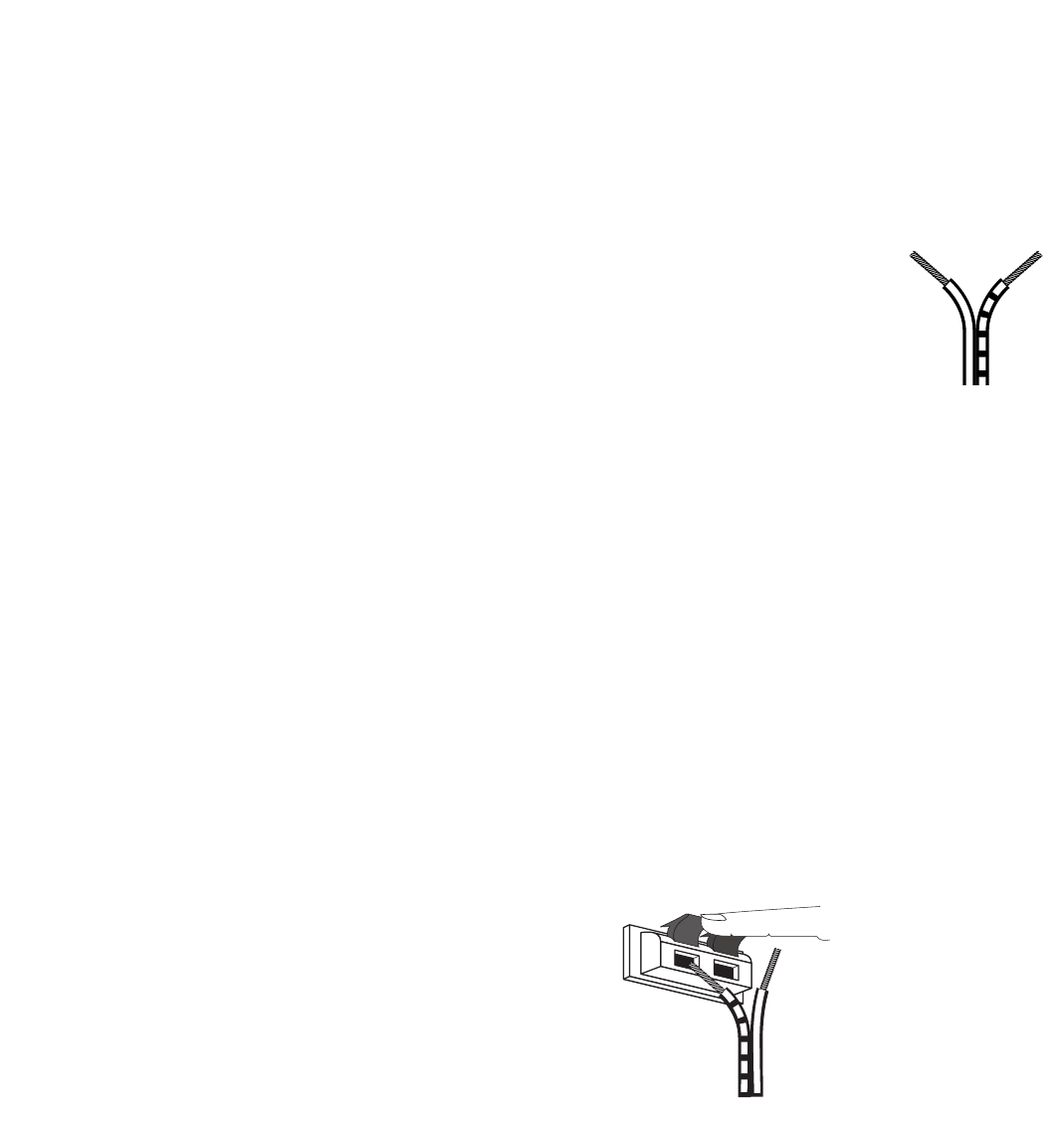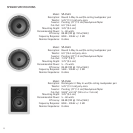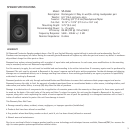
PAINTING THE SPEAKERS
If you like the designer white finish which is a part of your Russound
Contractor speakers, then you are ready to install. But if you want your
speakers to completely blend in with a colored wall or accent the sur-
face, now is the time to paint the speakers’ outer frames and perforated
grilles.
The speaker’s outer surfaces are ready to accept ordinary latex wall paint
or aerosol spray paint. Because the speaker baffle surface behind the
perforated grille should remain black, you will need to mask this area off
before you begin painting, or use the included template cover.
1. Remove the speaker grilles. From the back of the speaker, push the
clamp (dog-ear) towards the grille to loosen it so you can pull it off.
2. Attach masking tape to the cardboard masking template which has
been included with your speakers.
3. Press the template onto each speaker’s surface to cover the woofer
and tweeter.
4. Paint the outer speaker frame and grille separately. A roller with a
short or medium nap will work much better than a brush. If you’re
using spray paint, make sure that you achieve the same coverage on
both grille and frame.
5. After the paint has thoroughly dried, remove the template and/or
masking tape.
There’s no need to replace the grille at this time since you will need
access to the inner speaker surface during installation.
CUTTING HOLES FOR THE SPEAKERS
Wallboard is an easy surface in which to make a relatively neat hole.
Make sure you don’t make it any bigger than the template.
1. Determine the location of your joists/studs so that the speaker can be
approximately centered between them.
2. When you’re reasonably sure of where the joists or studs are (and are
TOTALLY sure that there isn’t an electrical cable, water pipe or heat-
ing duct in that vicinity of wall), position one of the cardboard
mounting templates and draw an outline with a pencil.
3. Score the outline of the template with a utility knife to prevent chip-
ping or wall paper from tearing. Then use a keyhole/drywall saw or
motorized spiral-cut tool to make the opening.
- If you’re dealing with lath and plaster or thick paneling, you need to
use a different technique. Drill 1-inch holes at the corners of the
pencil outline. Then use a fine-toothed keyhole saw or even a hack-
saw blade with VERY slow strokes to saw through and remove the
inner surface.
HOOKING UP YOUR SPEAKERS
IDENTIFYING “+” AND “-”
You need to be able to discriminate between the two conductors of the
speaker wire. If your wire has transparent insulation, this is easy: one
conductor will be copper-colored and the other silver-colored. Generally,
professionals denote the copper one as POSITIVE (+) and the silver one
as NEGATIVE (-).
If you’ve used wire which has an opaque
insulation, there are still differentiating
markings. Examine the wire closely and look
for:
1. A series of ribs or grooves on one con-
ductor
2. A painted stripe or dotted line
Denote any of these as the POSITIVE (+)
conductor for similar connections on both
ends.
NOTE: It is important that you label your
wires left and right when you run them
to eliminate future confusion.
AT THE SPEAKER END
1. Cut off excess wire, leaving about 2 feet extending through the
speaker cut-out hole.
2. Pull the conductors apart so they’re separated for the first two inches
from their ends.
3. Using a wire stripper, diagonal pliers or a knife, remove 1/2 inch of
insulation from each conductor.
4. Twist the tiny strands in each conductor into tight spirals.
5. IMPORTANT: Route the speaker wire THROUGH the sheetrock.
6. Attach the speaker wires to the red and black speaker terminals. Press
down on the protruding levers while inserting the wire. Make sure
that no stray strands of wire have gotten detached and are touching
the other main wire.
4
Figure 6
Typical indicator of
positive (+)(striped)
and negative (-)(solid)
speaker wire
conductors
Figure 7
Insertion of speaker
wire on back of
speaker baffle














